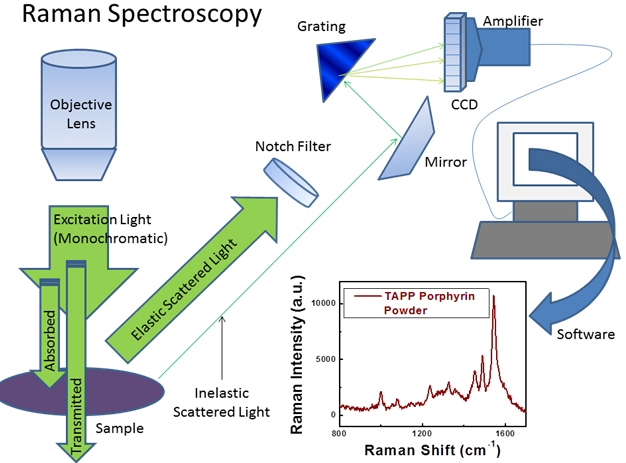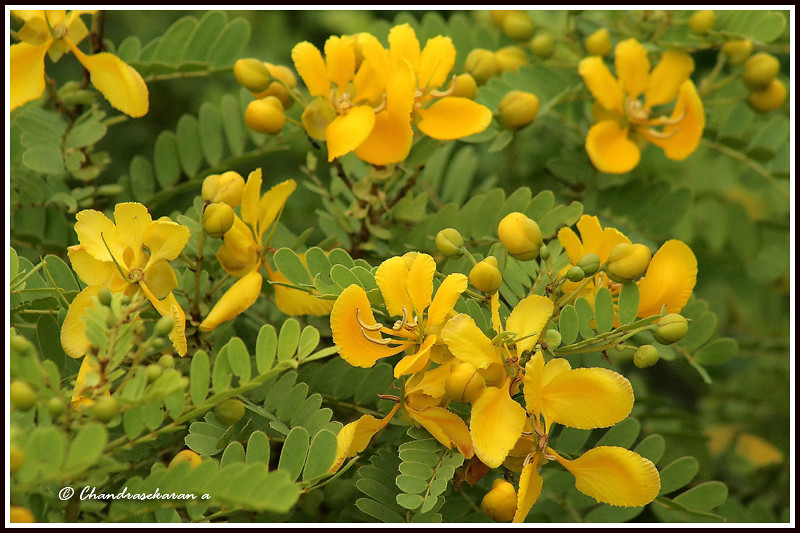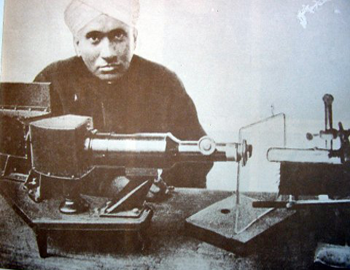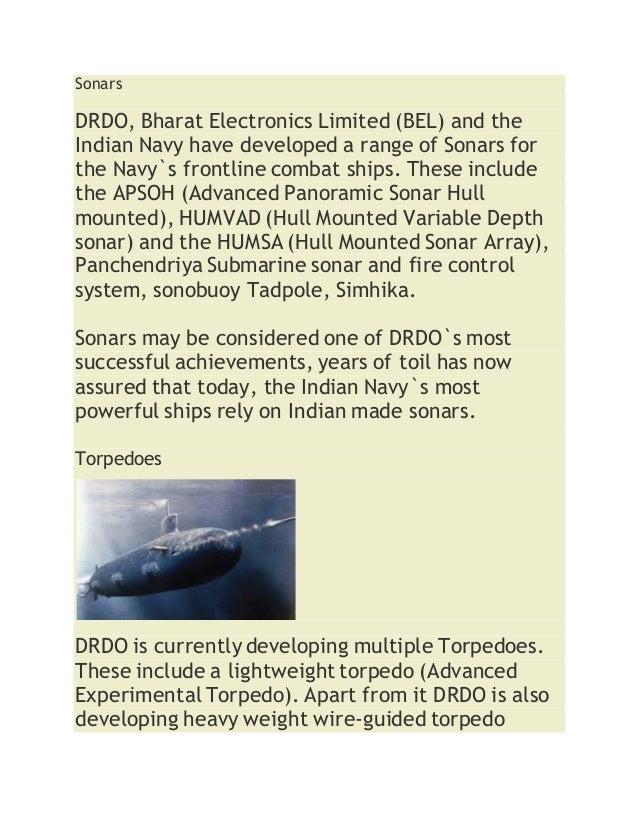
Table of Contents
- Summary
- Iron and Steel Technology: Metallurgical Engineering
- Healthcare and Medical Sciences
- Water Resources Management
- Science and Math Education
- Cognitive Sciences
- Personalities
- References
Summary
From textile manufacturing, agricultural methods, military techniques, civil management and administration, and metal/steel works to advanced temple construction techniques, ship building, and water management works, Tamizhs have excelled in the use of scientific techniques and technology since ancient times to enhance the quality of life of all its peoples. It has been stated that while Hellenic western civilization prizes intellectualism, and China’s civilization is built on philosophy, Indian civilization is adhyatmic in nature. India’s Rishis, Yogis, and Gurus pursued the ‘adhyatma vidya’ or the inner sciences [10] based on first-person empiricism (embodied knowing) and helped improve and maintain the physical and psychological well-being of its people. These parallel developments enabled the Tamizhs to become a global manufacturing giant and construct the world’s most powerful navy, while at the same time, balance material gain with dharmic progress in terms of self-realization and inner peace. We start with a brief overview of contemporary Tamil Nadu before looking at some examples of its long tradition of technology and science.
Today, Tamil Nadu is one of the most important states in India when it comes to science and technology, and has justly gained a reputation for itself in this regard. The current CEO of Google, Sundar Pichai, is originally from Tamil Nadu (TN). The Indian Institute of Technology, Madras as well as other universities and schools in TN have produced many a fine sci/tech graduate who work as scientists, entrepreneurs, and technocrats in the top companies in India and around the world. Mahendragiri in Tirunelveli is the site of the world-famous space organization of India (ISRO)’s propulsion complex. Other well-known Universities for Science and Technology in TN include the Anna university in Chennai, NIT Trichy, and the SASTRA university in Thanjavur.
Iron and Steel Technology in Ancient India
As a case study of science and technology in ancient India, including the Tamizh land, we start with a brief review of metallurgy in Southern India, based on the work of late Prof. R. Balasubramaniam [1]. The work done to understand how the ancient Indians worked with iron is astounding, and India owes a debt of gratitude to Prof R. Balasubramaniam. The editor of Prof R. B’s work notes that “Iron technology in India seems to have made a beginning more than 3000 years ago. High quality steel was made in the first millennium BCE“. The manufacture of ancient cannon barrels and the ‘shrink fitting’ employed required an understanding of the strength of materials in terms of the tensile and compressive stresses involved. Understanding the stress and resultant strain to gauge the strength of materials is a fundamental course in modern undergraduate mechanical and civil engineering. The professor notes that the Indian blacksmiths preferred forge-welded cannons to the cast-iron variety because of the former’s structural superiority.
Iron Ore
Iron melts at 1540 deg Celcius, and ancient Indian furnaces were incapable of attaining such a high temperature, and ingenious alternatives were employed to extract iron ore from ore, as per the planned end-user application of the ore. The carbon monoxide required in the procedure was produced by the burning of charcoal. Steel is an alloy of carbon and iron, and the carbon content of steel (which directly impacts the strength of the steel) was carefully controlled. The ‘iron lumps’ produced were used to manufacture agricultural implements, household items and utensils, building tools, and weapons. Prof RB notes that the ancient Indians were masters in the product of steel.
Corrosion Resistance
An incredible resistance to corrosion is another important property of ancient Indian iron. The famous iron pillars in India remain standing after more than a thousand years. This is due to the relatively high level of Phosphorus content that appears to produce a super-fine protective coating. A nineteenth century British traveler in Southern India notes the iron workers using the bark of a plant (Aavaram Poo in Tamizh, Taravar in Hindi, Cassia Auriculata in Latin) inside the furnace. The Aaavaram plant bark is rich in Phosphorus, which it extracts by osmosis from the ground. The Aavaram Poo is also known by Indians to have excellent Ayurvedic medicinal properties, and can be dried and powdered to be used for skin treatment. This multidisciplinary approach demonstrates that our ancestors integrated their knowledge of medicine and botany into metallurgy.

A huge fraction of steel produced today (which was around 900M tons a decade ago) is lost, both in terms of volume and cost, due to corrosion. A deeper understanding of the Indian approach can lead to new solutions that are useful today. For example, the challenge of designing long-term, corrosion-resistant storage for a growing nuclear wastepile.
Casting
An ancient method for casting iron (molten metal that is poured into moulds, solidifies and acquires the shape of the mould) was the Madhuchchist (lost-wax) method. The beautiful Chola Bronzes were produced using this technique.
Wire-drawing
Fine steel, brass, bronze wires of different diameters were made for stringed musical instruments. India was well-known for its gold and silver jarigai work in sarees. Prof RB notes that producing steel wire requires the highest level of skill, including deep knowledge of the thermomechanical behavior of steel.
Wootz: High-carbon steel
The manufacture of arms and armor required the production of very high-carbon steel. The scientific and engineering wonder that is wootz steel originated in India, and the Tamizhs were also involved in this production.
Wootz is a corruption of the basic word for steel used in Southern India: uruku in Tamizh, urku in Kannada, etc. Very few excavations of wootz production sites have been conducted so far. Sites as old as 250 BCE have been found in Tamil Nadu.
Per Prof RB, Wootz steel is primarily iron containing a high percentage of carbon (1.3% – 1.8%). Specifically, wootz should be used to refer to the high carbon alloy produced by the crucible melting process. Wootz steel is produced by heating iron, along with other materials in a closed clay crucible, enabling the iron to pick up carbon, and then melted. This solidified iron lump takes the shape of the bottom of the crucible is the wootz cake. To process wootz steel cakes into swords, the discs were first cut longitudinally, and subsequently pass through several stages of processing including beating, tempering, sharpening, and finally ending with the surface etching. The ancient Indians solved the dual challenges of specialized steel production as well as the subsequent processing into fine cutting objects. The wootz steel cakes were manufactured in the Deccan and shipped to steel production centers all over India, as well as the Islamic world during the medieval period. This was precisely the steel used in the famous ‘Damascus blade’.

There were two methods for producing wootz – labeled the South Indian process, and the Hyderabad process, respectively. In the South-Indian process, the crucibles heated a combination of wrought iron and wood charcoal from the Aavaram and Erukku flower plants (we note here that both plants are important from a Ayurvedic perspective). The cake production process took about six hours to complete.

Here, we quote Prof RB, who notes multiple examples of Indian metal technology being copied by the British without crediting the original source, and later getting patented in Europe. A famous instance being the ‘champion method’ for extracting zinc. Once these Indian methods were perfected in Europe, the British systematically terminated the original practices in India. The wootz steel manufacture was eventually banned by the British Raj in the eighteenth century. Exports decreased gradually and the native practices became extinct by the beginning of the 20th century. A magnificent 2000+ year old Indian tradition was extinguished, and the traditional Iron and Steel workers, the ‘gems of India’, lost their livelihoods.

Salt-Petre
An interesting point in [1] is that India can claim the discovery of Salt-petre, evidenced by references to it in several ancient texts. For example [7] notes “A verse in the Sanskrit alchemical text Rasopanishada narrated the preparations of a gunpowder mixture. Tamil texts also describe the preparation of fireworks using sulphur, charcoal, saltpetre, mercury, arsenic, camphor etc..”
Healthcare and Medical Sciences
Surgical Instruments
Prof R. Balasubramaniam’s book section on Wootz steel [1] notes that the use of many surgical instruments are quoted in the Sushruta Samhita, including some which could bisect a hair longitudinally. Thus, the production of high-quality steel yielded state-of-the-art instrumentation, which in turn spurred advances in multiple fields.
Ophthalmology
The contributions of Raja Serfoji II (1798-1832) [3] are important to take note of, and we have verifiable data on his contributions to science. Raja Serfoji was a a great ruler from the Bhosle clan of the Marathas who ruled Thanjavur. He is known for having built free chatrams (rest houses) for pilgrims. His contribution to the Sarasvathi Mahal library, which ranks among the most amazing ones in India, is priceless. He also established the Dhanavanthri Mahal for research into traditional medicine as well as treatment of sick patients, both human and animal. He constructed a zoological garden, and erected a shipyard near Thanjavur, besides being a patron of fine arts. He is recognized as one of the last great and truly independent Hindu statesman kings of India, who were able to think far beyond their own lifetime.

We now know his contributions to Opthalmology. This was possible thanks to ophthalmologists and other experts who visited the Sarasvathi Mahal Library and reviewed the evidence in the form of patient records, drawings, etc.

They report: “Forty-four patient’s ophthalmic records were found. Six records were written in Modi script, 38 were written in English and 18 drawings were found. Conclusion: In Thanjavur, King Serfoji II carried out methodical ophthalmic practices between 1798 and 1832. Both European and Indian medicines were used. Cataract Surgery was performed. Detailed ophthalmic records were maintained. The only evidence of Serfoji’s amazing contribution to medicine lies in 50 charts and manuscripts.“
Siddha Medicine
The culture page introduces the Siddha knowledge system. Siddha medicine, which bears resemblance to Ayurveda, is a traditional knowledge system that is popular in Southern India to this day, and is focused on providing personalized herbal medical prescriptions customized to an individual’s body type and nature of ailment, while also emphasizing personal discipline in dietary habits and lifestyle. This is in direct contrast to the largely statistical approach employed in Western allopathy. Furthermore, Indian Physicians in the west who are well-versed in both Ayurveda and Allopathy note that a key differentiating feature of the traditional Indian approach to medicine and healthcare is its extensive history taking of the patient prior to commencement of any treatment. This history taking is comprehensive and significantly more detailed compared to modern Western allopathic practice. We have in [6] the Karpa Chustiram (aphorisms on medicine) that contain several verses on the preparation and consumption of Siddha medicine. For example, a verse states the scientific approach employed: ‘once the condition of the body has been ascertained, various herbs like ginger, pepper, clove, etc. should be pounded together and consumed’. These herbs come with various combinations to suit individual body conditions. The commentary on the verse notes that Siddha medicine is a world by itself and is practiced widely in Southern India. It is mostly based on herbs and the maintenance of personal discipline in food and other habits. The medicinal ingredients taken by the Saadhaka while doing Yoga will make the body ‘adamantine’. Some of the verses suggest a similarity between the Siddha approach and Tantra.
It is important to note that such personalized prescriptions from Siddha and Ayurveda are almost surely an outcome of a systematic analysis. Although at times it may appear magical, like Ramanujan’s equations, it is apparent that there is a scientific method involved in these Indian approaches. ‘Scalable personalized solutions’ is a modern day ‘holy grail’ quest in the west, and India has the tradition, the intellectual property, as well as the field expertise required to dominate this area. If India does not strive to become the leader here, some one else will.
Water Resources Management
Prof. P. K. Kanagasabapathi in [2] quotes the Cambridge Encyclopedia of India, Pakistan, Bangladesh and Sri Lanka (1989), which notes: “The whole of South India is dotted with tanks. A British expert writing in the 1850’s estimated that the total number of such tanks in the Madras Presidency to be over 50,000. Another estimate indicated that in the eighteenth century, there were more than 38,000 tanks in the region that later constituted the Mysore State. The state had an area of around 29,000 square miles. It is, therefore, a fair estimate that there were over a lakh tanks in the whole of South India. These tanks were constructed and maintained by local effort. Together they formed a closely-knit whole so that the outflow from the one at a higher level supplied the one at a lower level, and so on”1.” We have to note here the perfect planning that existed to conserve water in those days. The Encyclopedia further continues to say: “This chain of tanks was so complete and inter-related within itself that British engineers of the nineteenth century felt that it would have been impossible to add another tank to the chain or to take out one from it“.
Education
In this subsection we review, from a Tamizh perspective, India’s native education system that was in place for several centuries, before it was annihilated by the British. We also examine the nature of math education provided during those times.
The Indian Education Holocaust
India and the world owes a debt of gratitude to Dharampal [4] for his efforts in bringing to light all the data that reveals the educational catastrophe that befell India after the British occupation. Copious data that reveals the true picture of pre-colonial education in the Madras Presidency and other provinces are presented by Dharampal. Brief extracts of his findings with limited comments are presented below.

Math Education in Tamil Nadu: A Historical Perspective
We briefly review how Ganita (the science of computation) was taught to Tamizh children in pre-colonial times in the Thinnai (Verandah/Patio) schools and the local elementary schools known as Pathashalas by excerpting the discussions in [5]. We first understand the original goal and the deep science behind the Ganita (arithmetic, specifically) teaching approach adopted in these indigenous schools. We can see, step-by-step, how it was appropriated and digested by missionaries based on their Christian and western values. This was subsequently incorporated into the English education system as a new invention, with little or no credit given to the original creators. Finally, this distorted and reductionist teaching approach was re-exported back to India and thrust upon an unsuspecting public by missionary schools in order to replace and then erase the indigenous approach, seriously damaging the way elementary school math has been taught in India ever since. If millions of young Indian kids find ‘math’ to be ‘rote torture’ today, we have evidence for at least one reason.
Cognitive Sciences
Several great Rishis, Siddhars, and dharmic Gurus lived in the ancient Tamizh lands whose practices were based on the adhyatma vidya, or the inner sciences. These seekers employed a scientific and systematic experimental approach, using their own mind and body as laboratory in order to generate new results. These Rishis, who are dismissed by a few westernized minds as ‘mystics’, can be rightly regarded as the cognitive scientists of their time. In the last few decades, experimental studies done in the west using the sophisticated instrumentation they developed, have allowed external verification of these first-person empirical results. Such studies reconfirm to the west the practical benefits of transcendental meditation [8], Sanskrit mantra chanting [9], Yoga, etc that was always known to India, and the east, since ancient times.
This sequence is similar to Srinivasa Ramanujan’s amazing results that were achieved by his own systematic approach. His results were offered without deductive proof based on western axiom, and have kept Western mathematicians busy trying to proving them for nearly a century after his demise.
Brief bio-sketches of Ramanujan, and other famous Tamizhs from the recent past are presented below.
Personalities
As we already mentioned in the history and culture pages, the Tamizhs have always respected and given paramount importance to knowledge and education since ancient times, and it is not surprising that it has produced a relatively high percentage of India’s science, math, and technology giants.
Srinivasa Ramanujan

(early 20th century) Among the greatest mathematicians ever, Ramanujan was a genius who made pivotal contributions to Mathematics and the field of Ganita (the science of calculation) in his short life. Ramanujan’s methods and pattern of results suggest that his intellectual/scholastic lineage can be traced back to the Aryabhata (Kerala) school of math, Bhaskara, Aryabhata, Pingala, etc., thereby establishing a continuity of Indian contributions to Ganita areas over several centuries. Although he never provided a western-style deductive proof for his results, researchers later found that only a tiny fraction of the results were invalid, and that a very high proportion of his results were new, keeping contemporary researchers busy in formally proving those results for a hundred years after his demise. Research on his work is still ongoing. He is fondly remembered as the ‘man who knew infinity’.
Among his most visually breathtaking results is this important infinite sequence for ‘Pi’ in 1914. M. D. Srinivas has noted that Ramanujan’s equation yielded a quantum leap in the achievable precision in calculating a rational estimate for the ‘irrational’ Pi.

C. V. Raman

A great physicist and patriot, he is famous for demonstrating the ‘Raman effect’ that won him a Nobel prize in 1930. To this day, he remains the only Indian to win a Nobel prize in science while doing all his research and experimental work inside India. Furthermore, his achievement came when India was under brutal colonial occupation. The Raman research institute in Bengaluru is named after him.
Subrahmanyan Chandrasekhar

Astrophyicist and Nobel Prize winner (1983), famous for the ‘Chandrasekhar limit’. He studied at Presidency College, Madras, and was a nephew of CV Raman.
A. P. J. Abdul Kalam

Former President of India. He was a scientist at ISRO, and was also popularly known as India’s ‘missile man’ for his remarkable contributions to India’s missile program. His contributions to India are multi-dimensional, and he was much loved by the people of India, transcending all political and sectarian boundaries. He was awarded the Bharat Ratna in 1997 for his contributions to science and technology.
G N Ramachandran
A scientist who was responsible for massive contributions to Biology and Physics.
“G N Ramachandran” by Source. Licensed under Fair use via Wikipedia.
Arogyaswami Joseph Paulraj

Currently Professor Emeritus at Stanford University. He served as an officer in the Indian Navy where he made crucial contributions to India’s Sonar capabilities (APSOH). Later he made pioneering contributions in the field of wireless internet technology. He won several Indian Navy awards, and in 2011, the IEEE Alexander Graham Bell award.

Shiva Ayyadurai

Dr. Shiva Ayyadurai is a well-known Systems Scientist from MIT, and owns the copyright to the original EMAIL system.
Venkatraman Ramakrishnan

This 2009 Nobel-prize winning researcher in Chemistry was born in Cuddalore, Tamil Nadu.
References
- R. Balasubramaniam, “Marvels of Indian Iron Through the Ages“, Infinity Foundation Series, 2012.
- P. Kanagasabapathi. Indian Models of Economy, Business and Management (3rd Edition), 2012.
- Ophthalmic contributions of Raja Serfoji II, Indian Journal of Ophthalmology (Vol 60), 2012.
- Dharampal, “Collected Writings”, Volume 3.
- Mathematics Education in India: Status and Outlook, Editors R. Ramanujam and K. Subramaniam, 2012.
- The Yoga of the 18 Siddhas: An Anthology, edited by T. N. Ganapathy, 2004.
- D.P. Agrawal, Indian Chemistry Through The Ages, Infinity Foundation.
- R. K. Wallace, Physiological Effects of Transcendental Meditation, Science (vol 167), 1970.
- F. Travis, et al., Physiological patterns during practice of the Transcendental meditation technique compared with patterns while reading Sanskrit and a modern language, International Journal of Neuroscience (Vol 109), 2001.
- Rajiv Malhotra, “Being Different: An Indian Challenge to Western Universalism”. Harper Collins, 2011.
Additional References for Serious Readers and Research Scholars
Traditional Knowledge Systems: Essays, Infinity Foundation.

